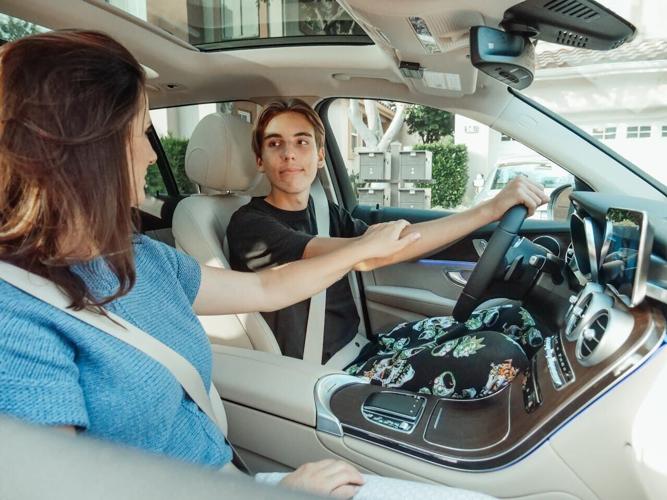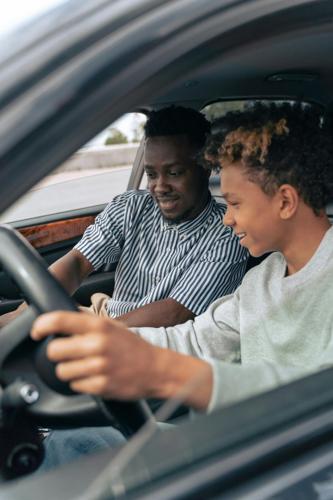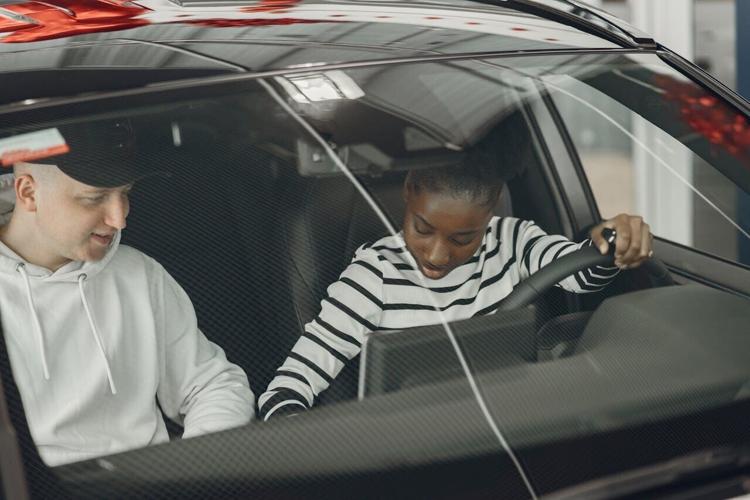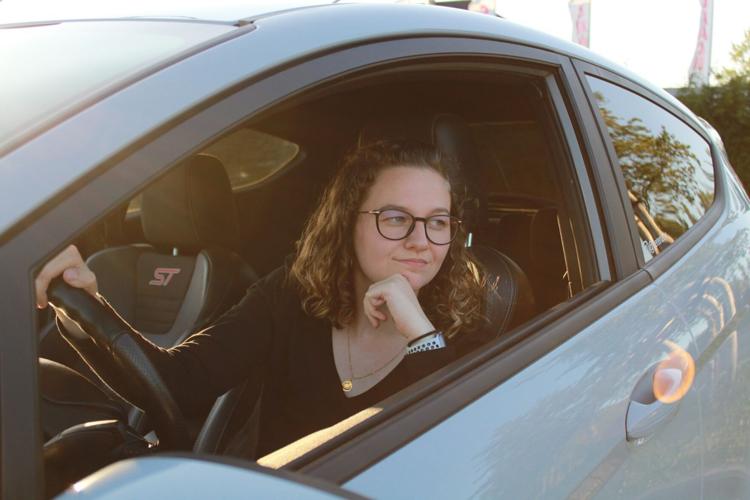
(Photo by Kindel Media via Pexels)
Parents fight with their kids more about driving than dating, and they’re paying over $6,000 a year for it, on average, according to a recent survey.
The survey of 2,000 American parents with a teen driver found that parents disagree more with their teens about driving (51%) than about their screen time (48%), grades (39%), life plan (35%) or even their dating lives (32%).
According to results, they’ll have an average of four disagreements per month with their teens about it, with the most common points of contention being how fast they drive (60%), how late they stay out at night (52%) and how much gas they use (50%).
And along with driving disagreements taking an emotional toll on parents, the finances stack up as well. Looking at the cost breakdown, 81% of parents surveyed pay for all or some of their teenager’s gas, contributing $176 on average per month.
Ninety-one percent cover all or some of their teens’ insurance, totaling to an average of $206 per month, and 92% pay for all or some of their teenagers’ car maintenance, costing them $158 per month on average.
Faced with rising costs and safety concerns, many parents are trading some teen independence for greater oversight, from telematics to stricter house rules.

(Photo by Ron Lach via Pexels)
The cost of safety on the road is worth it
The study was commissioned by Lemonade car insurance and conducted by Talker Research to uncover how much parents pay to fully equip their teens for the road, as well as the measures and tools they use to set their teens up for safety and success as drivers.
In the study, when asked what they're more worried about — the cost of their teen driving or their safety — nearly all parents (93%) said their child’s safety on the road is more important than how much it costs to equip them as a driver.
And one way parents and insurance providers are taking their teens’ safety seriously is by using telematics, or remote monitoring, to keep an eye on and assess their teenagers’ driving.
When respondents were asked how they felt about insurance companies using telematics to track their teens’ driving habits, most (63%) felt positively about it, with more than a third (35%) reporting that their insurance provider already uses telematics to monitor their teenager.
This points to a broader shift: parenting in the AI age, where digital tools help keep teens safe while raising questions about privacy and autonomy.

(Talker Research)
Another way parents are working to ensure their teens’ safety is by establishing driving rules for their teenagers.
In the survey, some of the most common driving rules parents have for their teens were found to be: no phone usage at all when driving (73%), they must always tell their parents where they’re driving to (61%), they need to be home by their curfew (60%) and they’re not allowed to drive when tired (52%).
More than half of parents (56%) have also grounded their teens in the past from using the car, often for breaking driving-related safety rules, and almost all (96%) reported they’re currently working with their teen to teach them to be a safer driver.
“Almost all parents say safety comes first,” said Nikki Lerol, head of APD and claims telematics at Lemonade. “But the data shows the emotional price of getting there: more arguments, more oversight, and a lot of house rules. Digital tools like telematics can help teach responsible driving, as long as families talk openly about boundaries and trust.”

(Photo by Gustavo Fring via Pexels)
Generational shifts in teen car ownership
The data also revealed a major generational shift in teen car ownership and how families supervise driving.
Looking back at how many parents surveyed were car owners when they themselves were teens, 45% had their own cars, and of those, many bought their cars themselves (35%). Back in the day, only 41% said they shared a vehicle with their parents.
In 2025, nearly two-thirds of teens (61%) share a car with their parents, a setup that naturally makes monitoring and coaching easier. It’s less common these days for teens to have their own cars, compared to when their parents were growing up (39%), and even less popular for teens to buy their own (14%).
Sharing cars also reflects today’s financial reality, and it can make monitoring, coaching, and safer habits easier.
“We commissioned the study to investigate not only the financial implications of having a teen driver, but also the emotional rollercoaster that parents go through to help their teenagers navigate the road safely,” said Lerol. “And we found that parents are going above and beyond, using thoughtful and well-planned safety rules and savvy tools like telematics to keep their kids safe.”

Handy Wicaksono
MOST COMMON DRIVING RULES PARENTS SET FOR TEENS
- No phone usage at all when driving (73%)
- No talking on the phone (71%)
- They must always tell me where they’re going (61%)
- Be home by a certain time at night (60%)
- No driving when tired (52%)
- They must text me when they arrive at the destination (50%)
- They must have tracking enabled on their phone, so I can see where they are (43%)
- No eating while driving (42%)
- No driving people I haven’t approved them to drive (38%)
- No driving past a certain distance from home (27%)
- No driving at night (22%)

Thibaut Santy
Survey methodology:
Talker Research surveyed 2,000 Americans who drive, and who are also parents to a teen driver; the survey was commissioned by Lemonade and administered and conducted online by Talker Research between Sept. 9 and Sept. 16, 2025.
We are sourcing from a non-probability frame and the two main sources we use are:
- Traditional online access panels — where respondents opt-in to take part in online market research for an incentive
- Programmatic — where respondents are online and are given the option to take part in a survey to receive a virtual incentive usually related to the online activity they are engaging in
Those who did not fit the specified sample were terminated from the survey. As the survey is fielded, dynamic online sampling is used, adjusting targeting to achieve the quotas specified as part of the sampling plan.
Regardless of which sources a respondent came from, they were directed to an Online Survey, where the survey was conducted in English; a link to the questionnaire can be shared upon request. Respondents were awarded points for completing the survey. These points have a small cash-equivalent monetary value.
Cells are only reported on for analysis if they have a minimum of 80 respondents, and statistical significance is calculated at the 95% level. Data is not weighted, but quotas and other parameters are put in place to reach the desired sample.
Interviews are excluded from the final analysis if they failed quality-checking measures. This includes:
- Speeders: Respondents who complete the survey in a time that is quicker than one-third of the median length of interview are disqualified as speeders
- Open ends: All verbatim responses (full open-ended questions as well as other please specify options) are checked for inappropriate or irrelevant text
- Bots: Captcha is enabled on surveys, which allows the research team to identify and disqualify bots
- Duplicates: Survey software has “deduping” based on digital fingerprinting, which ensures nobody is allowed to take the survey more than once
It is worth noting that this survey was only available to individuals with internet access, and the results may not be generalizable to those without internet access.

























(0) comments
Welcome to the discussion.
Log In
Keep it Clean. Please avoid obscene, vulgar, lewd, racist or sexually-oriented language.
PLEASE TURN OFF YOUR CAPS LOCK.
Don't Threaten. Threats of harming another person will not be tolerated.
Be Truthful. Don't knowingly lie about anyone or anything.
Be Nice. No racism, sexism or any sort of -ism that is degrading to another person.
Be Proactive. Use the 'Report' link on each comment to let us know of abusive posts.
Share with Us. We'd love to hear eyewitness accounts, the history behind an article.